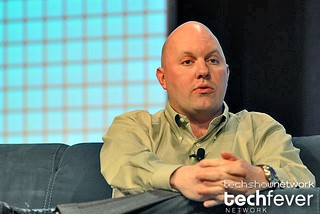With BuzzFeed and Upworthy reporting eye-popping traffic growth and planning to hire teams of reporters, many people are wondering whether sharing is the new currency of media success.
The idea is that if you give readers enough top-ten lists and animated GIFs they’ll do all your marketing for you. You don’t even have to worry about search engine optimization because nothing ever went viral on search. This philosophy has even given birth to a new style of headline writing that’s intended to stimulate sharing (“Why’s This Kid Throwing Coins? The Reason May Or May Not Blow Your Mind, But Something Does Blow Up,” reads one recent Upworthy example).
But maybe sharing isn’t all it’s cracked up to be. In a recent case study on USA Today, Michael Wolff looks at Business Insider, the hyper-caffeinated new-media brainchild of exiled Wall Street bad boy Henry Blodget. Business Insider is notorious for its fixation on being first and for driving its reporters to exhaustion. It’s a content mill – albeit with higher quality than many of its peers – that churns out large volumes of information in the quest to earn shares on Facebook and Twitter.
And it’s generating traffic: 25.4 million unique visitors in January, says Wolff. The problem is that Business Insider has low reader loyalty:
Only a small percentage of Business Insider’s traffic actually seeks it out and regards it as a worthy destination and a source with particular brand authority. Most other readers land on a Business Insider article because of search-engine results, or because of an engaging — tabloid-style — headline in a Facebook feed and other social-media promotions, which generate 30% of Business Insider’s traffic.
Wolff asserts that this drive-by traffic has little value because readers don’t identify with the brand. Worse is that the drive for big numbers becomes a race to the bottom. As advertising rates continue to drift lower, publishers must seek ever-higher traffic volumes to stay in the same place. This means resorting to gimmicks like contests, cheesecake photos and celebrity gossip. That attracts poor-quality traffic which has low brand affinity and little value to advertisers. It’s a vicious cycle.
Digital Dimes
Blodget disagrees. In a response on Business Insider he says that the very problems Wolff cites are actually opportunities. New media companies don’t have legacy businesses to protect and so are free to disrupt mainstream competitors and steal revenue, he says. “We are better at serving digital readers than many traditional news organizations, so we can thrive on these ‘digital dimes,'” writes Blodget. His post displays a photo of what are presumably a group of happy young reporters in the company’s New York offices (Wolff says Business insider has hired 70 full-time journalists at a cost of more than $15 million a year. Do the math).
We think Wolff is on to something. Take a look at the chart below from the Pew Research Journalism Project. It depicts traffic to the 26 most popular U.S. news sites over a three-month period. It shows conclusively that visitors who reach a site directly (via a bookmark or typing the address into a browser) stay much longer, read much more and visit more often.

Source: Pew Research Journalism Project
This isn’t surprising when you think about it. Typing “nyt.com” into a browser is an act of brand affinity, whereas headline-clickers on Facebook don’t really care where the headline comes from. The BuzzFeeds and Upworthys of the world must compete headline by headline. Is that a problem?
Attracting readers with gimmicks is nothing new. One of the myths of the news business is that people read newspapers primarily for the news. The reality is that they read for all kinds of reasons. Any veteran of the pre-digital publishing days will tell you that an embarrassingly large number of traditional newspaper readers bought copies for the coupons, Ann Landers, comics, the Jumble and the daily horoscope.
But at least in those days readers knew what brand to buy. Today’s audience has more affinity to the content than to the publisher, and aggregators like Flipboard are constantly looking for ways to supersede publishers’ brands with their own. Brand still matters. A click is not the same as a reader.
Related articles
 Think Upworthy is Just About Sharing Great Stories on Facebook? You’d Be Wrong.
Think Upworthy is Just About Sharing Great Stories on Facebook? You’d Be Wrong. The Lesson Small Online Publishers Can Take From Business Insider May Surprise You
The Lesson Small Online Publishers Can Take From Business Insider May Surprise You Why Michael Wolff Is Wrong
Why Michael Wolff Is Wrong New cash, new questions for Business Insider
New cash, new questions for Business Insider Upworthy co-founder at SXSW: ‘This is what media should do’
Upworthy co-founder at SXSW: ‘This is what media should do’







